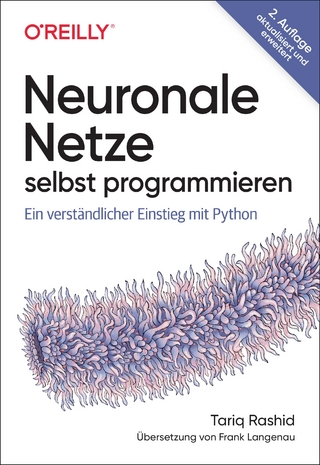
Computer Vision - ECCV 2008
Springer Berlin (Verlag)
9783540886891 (ISBN)
Matching.- 3D Non-rigid Surface Matching and Registration Based on Holomorphic Differentials.- Learning Two-View Stereo Matching.- SIFT Flow: Dense Correspondence across Different Scenes.- Learning+Features.- Discriminative Sparse Image Models for Class-Specific Edge Detection and Image Interpretation.- Non-local Regularization of Inverse Problems.- Training Hierarchical Feed-Forward Visual Recognition Models Using Transfer Learning from Pseudo-Tasks.- Learning Optical Flow.- Poster Session III.- Optimizing Binary MRFs with Higher Order Cliques.- Multi-camera Tracking and Atypical Motion Detection with Behavioral Maps.- Automatic Image Colorization Via Multimodal Predictions.- CSDD Features: Center-Surround Distribution Distance for Feature Extraction and Matching.- Detecting Carried Objects in Short Video Sequences.- Constrained Maximum Likelihood Learning of Bayesian Networks for Facial Action Recognition.- Robust Scale Estimation from Ensemble Inlier Sets for Random Sample ConsensusMethods.- Efficient Camera Smoothing in Sequential Structure-from-Motion Using Approximate Cross-Validation.- Semi-automatic Motion Segmentation with Motion Layer Mosaics.- Unified Frequency Domain Analysis of Lightfield Cameras.- Segmenting Fiber Bundles in Diffusion Tensor Images.- View Point Tracking of Rigid Objects Based on Shape Sub-manifolds.- Generative Image Segmentation Using Random Walks with Restart.- Background Subtraction on Distributions.- A Statistical Confidence Measure for Optical Flows.- Automatic Generator of Minimal Problem Solvers.- A New Baseline for Image Annotation.- Behind the Depth Uncertainty: Resolving Ordinal Depth in SFM.- Sparse Long-Range Random Field and Its Application to Image Denoising.- Output Regularized Metric Learning with Side Information.- Student-t Mixture Filter for Robust, Real-Time Visual Tracking.- Photo and Video Quality Evaluation: Focusing on the Subject.- The Bi-directional Framework for Unifying Parametric Image Alignment Approaches.- Direct Bundle Estimation for Recovery of Shape, Reflectance Property and Light Position.- A Probabilistic Cascade of Detectors for Individual Object Recognition.- Scale-Dependent/Invariant Local 3D Shape Descriptors for Fully Automatic Registration of Multiple Sets of Range Images.- Star Shape Prior for Graph-Cut Image Segmentation.- Efficient NCC-Based Image Matching in Walsh-Hadamard Domain.- Object Recognition by Integrating Multiple Image Segmentations.- A Linear Time Histogram Metric for Improved SIFT Matching.- An Extended Phase Field Higher-Order Active Contour Model for Networks and Its Application to Road Network Extraction from VHR Satellite Images.- A Generic Neighbourhood Filtering Framework for Matrix Fields.- Multi-scale Improves Boundary Detection in Natural Images.- Estimating 3D Trajectories of Periodic Motions from Stationary Monocular Views.- Unsupervised Learning of Skeletons from Motion.- Multi-layered Decomposition of Recurrent Scenes.- SERBoost: Semi-supervised Boosting with Expectation Regularization.- View Synthesis for Recognizing Unseen Poses of Object Classes.- Projected Texture for Object Classification.- Prior-Based Piecewise-Smooth Segmentation by Template Competitive Deformation Using Partitions of Unity.- Vision-Based Multiple Interacting Targets Tracking via On-Line Supervised Learning.- An Incremental Learning Method for Unconstrained Gaze Estimation.- Partial Difference Equations over Graphs: Morphological Processing of Arbitrary Discrete Data.- Real-Time Shape Analysis of a Human Body in Clothing Using Time-Series Part-Labeled Volumes.- Kernel Codebooks for Scene Categorization.- Multiple Tree Models for Occlusion and Spatial Constraints in Human Pose Estimation.- Structuring Visual Words in 3D for Arbitrary-View Object Localization.- Multi-thread Parsing for Recognizing Complex Events in Videos.- Signature-Based Document Image Retrieval.- An Effective Approach to 3D Deformable Surface Tracking.- MRFs.- Belief Propagation withD
| Erscheint lt. Verlag | 7.10.2008 |
|---|---|
| Reihe/Serie | Image Processing, Computer Vision, Pattern Recognition, and Graphics | Lecture Notes in Computer Science |
| Zusatzinfo | XIX, 826 p. |
| Verlagsort | Berlin |
| Sprache | englisch |
| Maße | 155 x 235 mm |
| Gewicht | 1276 g |
| Themenwelt | Informatik ► Datenbanken ► Data Warehouse / Data Mining |
| Schlagworte | Action Recognition • aerial imagery • classification • Edge Detection • filtering • Hardcover, Softcover / Informatik, EDV/Informatik • HC/Informatik, EDV/Informatik • Motion Capture • multi body tracking • multi camera • multi-modal sensors • photography • radiance • Segmentation • Statistics • Stereo Matching • supervised learning • surface matching • surface reconstruction • UNITY • Unsupervised Learning • visually impaired |
| ISBN-13 | 9783540886891 / 9783540886891 |
| Zustand | Neuware |
| Informationen gemäß Produktsicherheitsverordnung (GPSR) | |
| Haben Sie eine Frage zum Produkt? |
aus dem Bereich


